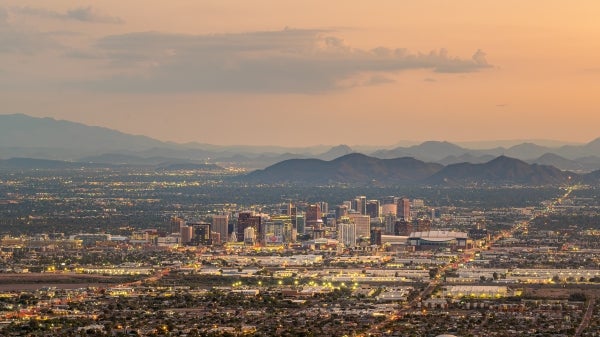Cosmic catastrophes featured at ASU Earth & Space Open House

A composite image of the Cassiopeia A supernova remnant from the Hubble Space Telescope, Spitzer Space Telescope and Chandra X-ray Observatory. Photo by NASA
The universe is a dangerous place. Join Arizona State University’s School of Earth and Space Exploration from 7 to 10 p.m. Friday, April 8, for the final Earth & Space Open House of the spring semester as we explore exploding stars, black holes, impact events and many other cosmic catastrophes.
The evening’s keynote speaker is ASU astrophysicist and associate professor Patrick Young, who will be presenting “The Dying of the Light: Magnificent Deaths of Massive Stars” in 3-D.
In addition, the open house will feature telescope viewing, a comet and solar systems impacts demo, a 3-D planetarium show, meteorite exhibits, and interactive demonstrations and exhibits in astrobiology, earthquakes, meteorites, geology, cosmology and more.
7:15 p.m. First 3-D planetarium show (Marston Exploration Theater)
8:45 p.m. Keynote lecture by Patrick Young, “The Dying of the Light: Magnificent Deaths of Massive Stars” (Marston Exploration Theater)
8-10 p.m. Telescope Viewing (weather permitting)
The evening's events are all free and open to the public. All activities are located in the Interdisciplinary Science and Technology Building IV (ISTB 4) on ASU’s Tempe campus.
All seating in the Marston Exploration Theater is on a first-come, first-seated basis, and the theater will be cleared after each event.
For more information, visit openhouse.sese.asu.edu or visit the school's Facebook event page.
The monthly open house is sponsored by ASU’s School of Earth and Space Exploration, Altair Rocketry, GeoClub, AstroDevils: ASU Astronomy Club, Icarus Rocketry, Students for the Exploration and Development of Space, the Center for Meteorite Studies, NASA Space Grant, Society of Physics Students, Students for the Exploration and Development of Space, and many others.
More Science and technology

New study finds the American dream is dying in big cities
Cities have long been celebrated as places of economic growth and social mobility, but new research suggests that their role in…

Ancient sea creatures offer fresh insights into cancer
Sponges are among the oldest animals on Earth, dating back at least 600 million years. Comprising thousands of species, some with…

When is a tomato more than a tomato? Crow guides class to a wider view of technology
How is a tomato a type of technology?Arizona State University President Michael Crow stood in front of a classroom full of…